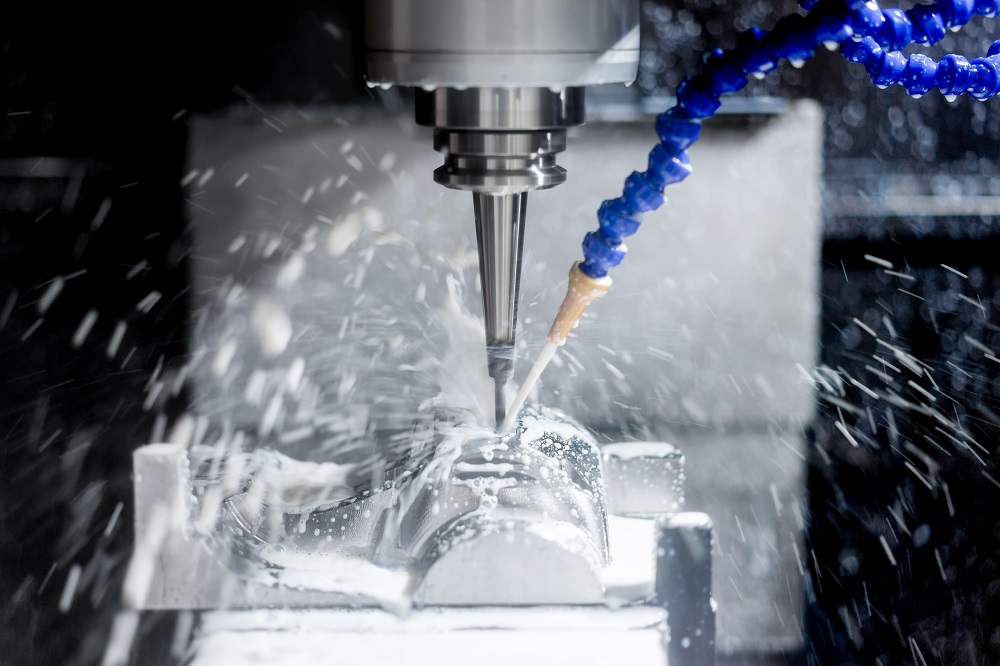The metalworking industry saw a sharp downturn in March 2020, as new orders and exports stopped coming in at their normal rate due to the rapid global spread of COVID-19. The 41.0 reading on the Gardner Business Index, while being at the lowest score it’s been in it’s more than eight-year history, doesn’t necessarily mean that the metalworking industry is doomed to suffer. In fact, with new materials and tooling, metalworking shops can gain access to new customers and new markets if they can successfully make the transition.
In a time when many manufacturers were already looking to increase efficiency by optimizing their existing processes and workflows and finding ways to reduce waste, we’ve seen machine shops take a more innovative approach in how they’re shifting their operations.
Shops are investing in new precision machines, higher coolant pressures, and tooling capable of greater material removal rates. This gives them a competitive advantage by achieving lower cycle times with greater accuracy and reduced scrap rates. Parts and tolerances not possible just a few years ago are being machined regularly today.
Leveraging new technology to drive cost savings
Technological advancements are changing the manufacturing industry along the entire supply chain. New materials, processes, and automation are being rapidly developed, and fluid and tooling manufacturers are evolving to meet new demands. For example, castings are now available with much tighter tolerances than before, which allows raw materials to be near net shape, or close to the final shape when it comes out of initial production.
Even more, the use of 3D printing is allowing for parts to be designed that were not possible before. This new 3D printing technology means even metals can be 3D printed, and those 3D-printed parts are being machined in some cases.
Using new and upgraded materials can create a competitive advantage for companies. In the automotive industry, for example, compacted graphite iron (CGI), also known as vermicular graphite iron, is becoming more widely used as well for brake disks, exhaust manifolds, and cylinder heads. This material is ideal for engine manufacturing, and can reduce the weight of the engine block by 22%, as well as reducing the height, width, and length of the assembled engine. However, to work with CGI, every aspect of the production process needs to be optimized, including tooling, machinery, and metalworking fluid.
The effect on operations
While these new materials mean that metalworking shops can produce more and higher-precision components, they also require that machinists and metalworking shops will need to handle them differently. Each new material requires that the machine be programmed properly and that the right tools are utilized. And many of these new materials can be extremely expensive, so it’s not as simple as discarding a mistake. Machinists will need to research the best way to mill these materials as they work on new projects in the shop.
Because some of these new materials are stronger than what was previously used in milling operations, they might be more difficult to machine. For example, shops that are used to machining cast iron will have to use different tooling or change the tools more often because CGI, while it’s considered a type of cast iron, is up to 75% harder than cast iron.
With new more productive machines, tooling capable of higher speeds and feeds, and more challenging materials, shops need to work closely with their suppliers and distributors to ensure they are making the best fluid selection for the unique applications they’re working on. In the past, fluids were chosen based on their cooling ability or lubricity. Now fluid manufacturers need to provide fluids that can meet both cooling and lubricity requirements.
While the future of milling is presenting a lot of new opportunities for metalworking shops, the one thing that doesn’t change is how important safety is when it comes to handling new materials and new tooling. As with any other milling operation, it’s important to handle the materials and parts with care. All operators should be trained to use the appropriate personal protective equipment (PPE) and to follow safe handling procedures.
As companies continue to investigate new materials that will reduce costs while improving the overall quality of the products they manufacture, it will be important for metalworking shops and operators to stay on top of these developments. That means knowing what tooling to use for the best results, as well as the proper way to care for it.
The bottom line for metalworking shops is that if they’re willing to expand their operations to use new materials and reach more customers and industries, they’ll be set up for long-term success.
Should the company need further information about improving operations with new materials and evaluating whether their metalworking fluids are up to the task, call +1 800-537-3365 or email us at info@masterfluids.com.

